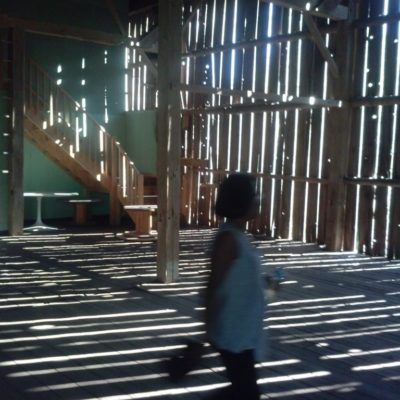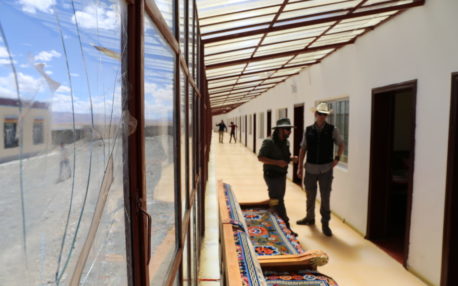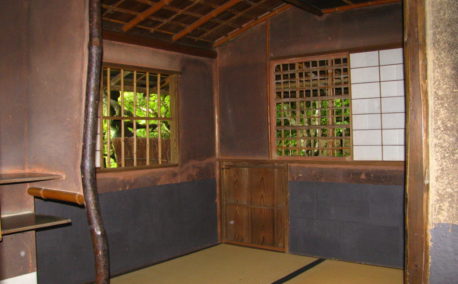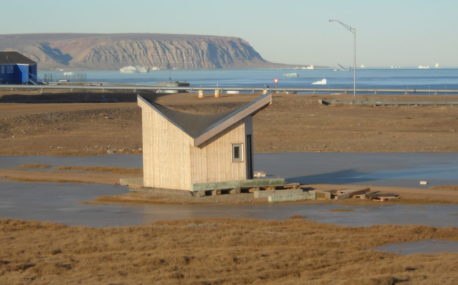An Architecture Manifesto
Buildings which enrich the experience of the moment, or at least fail to detract from that experience.
Some good buildings intentionally blend the line between nature and culture. Those buildings are difficult to photograph. Most easily-photographed buildings are sculptures in space – attempting to stand forward from nature or local context, often to the point of contrasting – and tend to disappoint when experienced in person. They are akin to the fashion expert who brings no books to the book club. Like us, building design is a balance between the contemporary and the timeless. My goal for buildings is to tilt the scales towards a timeless quality.
This modest goal requires buildings avoid superficial attempts to suggest “meaning”. This is the failing of expressionist artistic artifacts that often rely on dualistic expression to convey “meaning” about something other than what is at hand. Modest buildings, like other artifacts of craft, express the process of their creation and persistence. While the details delight, the overall design helps the user engage with the environment and neighbors, not estrange them by being overly focused on one audience.

Persistence is critical
The most sustainable building is the one that is maintained. Neglected, buildings will return to the Earth. We can buffer buildings from this fate by making them important to people who have stories involving that building. Buildings are performance stages where we set the plays of our lives. Once we stop setting our stories in a building, it is truly doomed. The long-lived building is kept healthy by human hands. We adore that which helps us see beyond our day-to-day shuffle. That which orients us to an expansive view points out a way towards broader perspectives.
In addition to hosting good stories, good company, and insight, a building needs to be efficient and flexible. A wasteful or constrained building is like a beautiful hat that is too small and constantly needs gold threads replaced. You will eventually discard it for a floppy sun-hat that is less attractive but more practical. In buildings, this is accomplished by designing for a “loose fit” that we can renovate later; by directing resources towards a stronger structure and greater utility-capacity rather than towards fancy finishes.
The Uncanny Valley
Aesthetically, an abstract design built without regard to the subtle differences in land, light, breeze, and views is like an android. An android looks a lot like a human, but its designed-perfection lacks the common thread of humanity: time and our adaptations in the form of foibles, neurosis, humor, and wisdom. There is something uncanny that distracts us, and if it is too close a simulacrum, we fall into the “uncanny valley” which the object of design cannot recover from.
Most, if not all, of us harbor a love of antiquity and respect for elders
Such antique culture is the backdrop for our own stories. Old buildings’ stories lend orientation and depth to our stories by being tangible links to our history. When people see the utility or function of a building as still valid to them in their day-to-day lives they will make the time to affect any required repairs. Veneration for the elder is normal as it reminds us that there is continuity in the human realm.
The ironic truth is that we look favorably upon the past but with the full insight that only hindsight grants. We were all just as confused in the past as we are now, but we now understand that earlier territory and would like to go live there. Obviously, this is not possible. We each are facing new challenges as we age, our children age, and the wheel of life spins on. Nostalgia is a kind of mourning for the past, and we need each other’s help to stay focused on the opportunities before us right now. Buildings designed in a historical mode cannot deliver us from the present; rather they lead into the uncanny valley of theme-park design.
Our homes tend to become an extension of our state of mind
It is filled with our belongings. We decorate with reflections of our mind, creating a personal model of our neurosis and aspirations. Thus the power of geomantic arts like Feng Shui are not limited to working with Kami, Drala, and faerie folk, but an actual input channel to working with our minds. Architects can facilitate such personal work, but your habitation needs to be intentional. My role as architect ends when you take possession of your home, but my aspiration is your home helps you achieve your aspirations.
We use buildings both as vessels for our neuroses and containers for realization. They are an expression of our desires and aspirations. They are on display for all to see. They are artificial constructs of culture and our personal desires, aversions, and inattention. Done well they are commodious, flexible, efficient, locally adapted, and adaptable to future generations’ needs.

They are commodious, adaptable, facilitate hospitality, and easy to maintain.

Each is a container that mitigates the natural elements for human activity.

Nostalgia, on the other hand, is a desire for a simpler existence.

Even without a design theme, a home is highly suggestible
